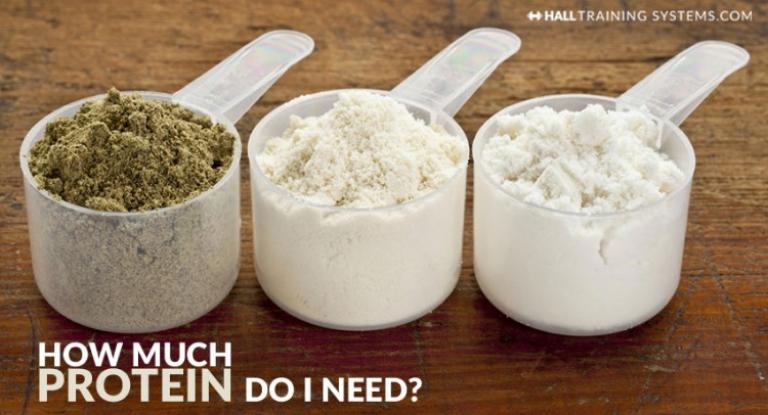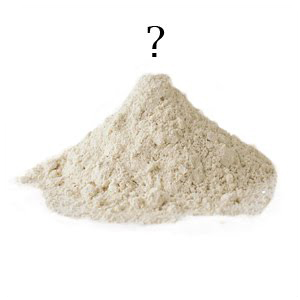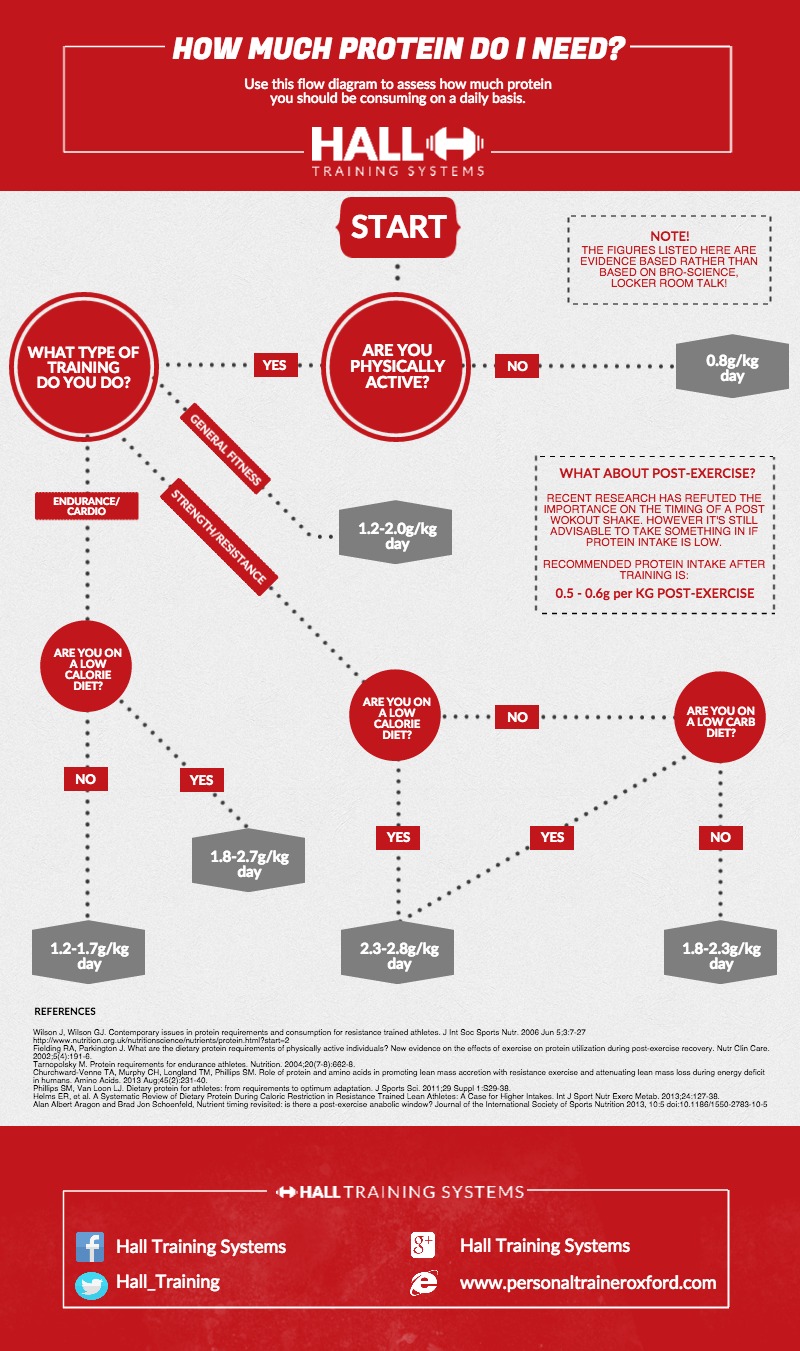
All of us who are interested in nutrition or training know that it’s important to have a high protein intake, but less of us know why?
There are two types of protein:
- Structural proteins: these proteins make up our muscles, organs, bones, skin, hair and nails.
- Functional proteins: these proteins contribute to the day to day running of our body.
They have various roles, manufacturing enzymes, making up parts of the immune system, and transporting various substances around the body - these are just a few examples!
The human body can’t exist without protein, and it can’t synthesise all the protein it needs itself. Protein is made up of amino acids – these are the building blocks of our bodies.
Complete and incomplete proteins
A ‘complete’ dietary protein contains all the different amino acids we require as humans. An ‘incomplete’ protein doesn’t. You’ll often hear people say that a lot of vegetarian protein sources, like lentils and bens, are incomplete proteins – meaning they lack some essential amino acids. This is a bad way of looking at it. Different proteins have different combinations of amino acids, meaning that some are better than others at specific things. Vegetarian protein sources aren’t necessarily worse than their meaty counterparts!
For example, grains have very little of the amino acid Lysine, but have lots of Methionine, while beans are low in Methionine and high in Lysine. If you ate these foods together, they would contain all the essential amino acids and be a ‘complete’ dietary protein. Any vegetarians out there should concentrate on getting high Leucine foods into their diet – soy, cottage cheese and kidney beans are great examples [1].
How much protein do we need? We need to take in protein because the body can’t store amino acids. Proteins are constantly broken down and recycled through a process canned protein turnover. About 300g of protein is turned over each day. In a normal person, about 4% of protein will be lost and need to be replaced through diet [2].
We need to take in protein because the body can’t store amino acids. Proteins are constantly broken down and recycled through a process canned protein turnover. About 300g of protein is turned over each day. In a normal person, about 4% of protein will be lost and need to be replaced through diet [2].
There are lots of factors that affect how much protein a person needs. These include age, stress levels, general health, gender, activity levels and existing body composition. The end goal is also important!
The recommended daily allowance for protein in the Uk and US is between 46 and 56g for adults, depending on gender, or 0.8g/kg of bodyweight [2]. This calculation works for about 95% of us, assuming that those 95% are eating good quality protein, not exercising, and eating enough calories.
If you’re on a low calorie or low carb diet, exercising a lot or are already lean, you need to increase your protein intake. Use the sum 2.3-2.8g/kg/day [3].
What about the anabolic window?
We’ve all heard the old-wives tale that its best to eat little and often, and I often heard this said about protein too. Actually, research shows that there’s no advantage to this technique! One study split its participants into two groups with different protein timings. One group was given a pulse meal pattern with 8/80/4/8% of their protein per meal, and the other group had 25% of their daily protein at each sitting. After six weeks there was no significant difference in their fat free body mass [4].
Most of us also rush to have our protein shakes after a workout, trying to cram them in during the ‘anabolic window’ – the time after strenuous exercise when protein consumption can supposedly help with muscle synthesis. Actually, there’s not enough data to back this up [5]. The only exceptions are if you’re:
- Unable to eat for 3-4 hours before/after training
- Training in a fasted state
- Use your shake as a reward after a strenUous session
- Struggling to hit your daily protein target
- An athlete or competative bodybulider/figure athlete
Rather than worrying about the anabolic window, focus on meeting the ‘Leucine threshold’ for the day. This is the point where muscle protein systhesis (MPS) is raised, meaning you’re like to put on more muscle! If you don’t train, the leucine threshold for triggering MPS is thought to be 1g in younger subjects and 2g in older subjects [6]. In a trained state, you will need 2-3g of Leucine [6], to maximise MPS. In practical terms this means gtting in 20-40g of protein per serving.
So! When you’re thinking about protein intake, whether it’s for body composition, recovery and repair or for general health, it’s key to make sure your body is getting as much high-quality protein as it needs. The timings and sources of that protein should be second on your list to think about.
Learn more about protein in our nutritional seminar - >> WATCH NOW <<
Calculate how much protein YOU need!
Use our infographic and follow the steps below to find out how much protein you should be eating on a daily basis. You can also calculate the amount of protein you need post-exercise too.
Note: Women require less protein than men and would typically begin on the lower end of the given recommendation.

Sources:
[1] http://nutritiondata.self.com/foods
[2] http://examine.com/faq/how-much-protein-do-i-need-every-day.html
[3] Lemon PW. Effects of exercise on dietary protein requirements. Int J Sport Nutr. 1998;8(4):426-47.
[4] Adechian S, et al. Protein feeding pattern, casein feeding, or milk-soluble protein feeding did not change the evolution of body composition during a short-term weight loss program. Am J Physiol Endocrinol Metab. 2012 Oct 15;303(8):E973-82.
[5] Aragon AA, Schoenfeld BJ. Nutrient timing revisited: is there a post-exercise anabolic window? J Int Soc Sports Nutr. 2013 Jan 29;10(1):5.
[6] Norton LE, Wilson GJ: Optimal protein intake to maximize muscle protein synthesis: examinations of optimal meal protein intake. Agro Food Industry Hi-Tech 2009, 20:54–57.
About Chris Hall
As the founder of Hall Training Systems, it is my mission to provide you with the very best personal training experience. I set up Hall Training Systems as Oxford's leading personal training service in nutrition, performance and weight loss, ensuring I can deliver the very best in training techniques.
You can find me on Facebook, Google+ or why not even give us a Tweet @Hall_Training

